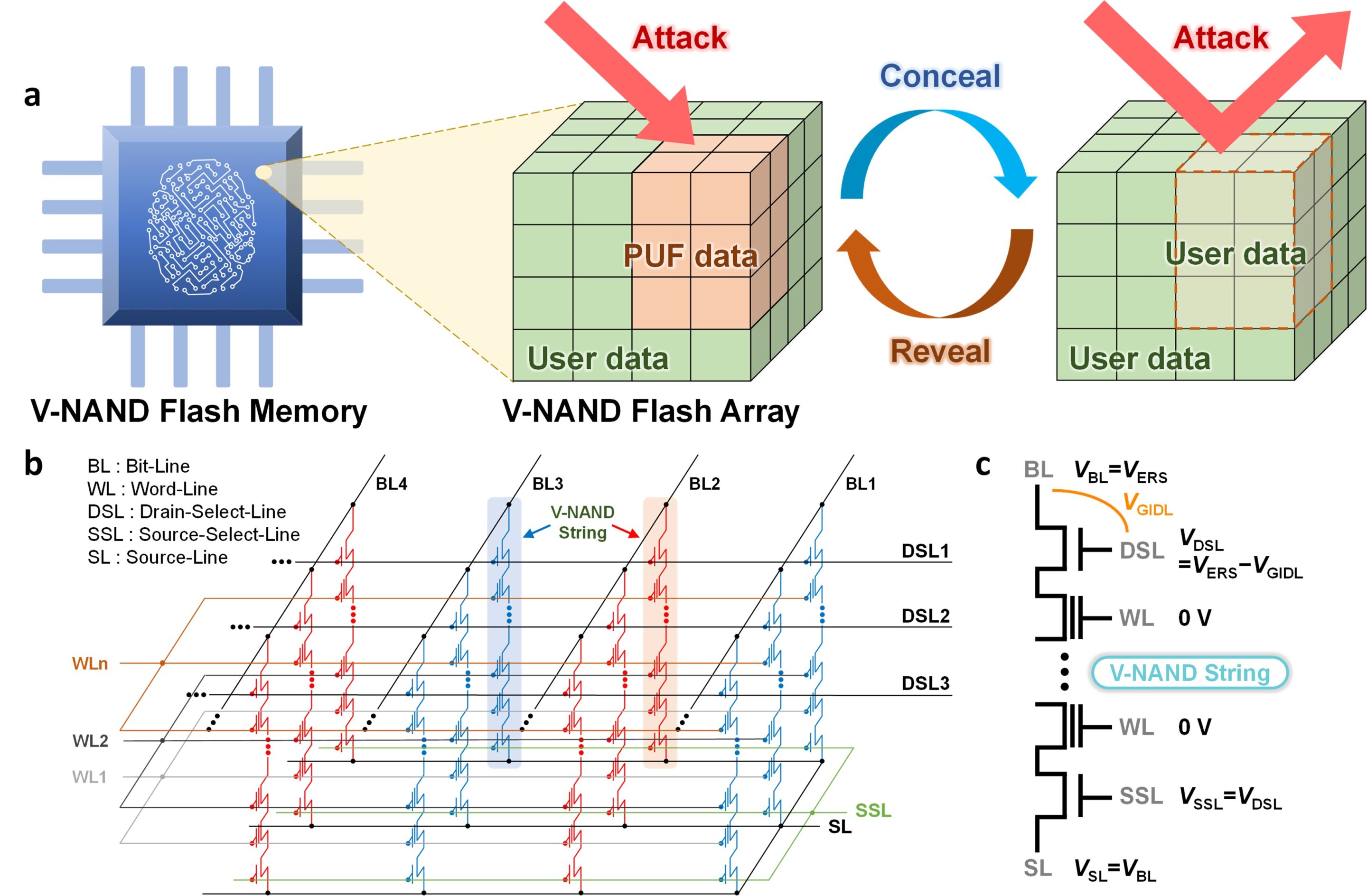- Flash memory now doubles as secure key storage using conceal-and-reveal method
- Encryption keys hidden in plain sight in standard commercial 3D NAND memory
- Machine learning attacks failed to guess the keys, showing true randomness and security
As digital data volume continues to grow with the rise of AI, cloud services, and connected devices, securing that data has become increasingly difficult.
Traditional password-based protections are no longer enough, and while hardware security solutions like Physical Unclonable Functions (PUFs) offer stronger protection, they have struggled with real-world deployment.
Most PUFs require custom hardware and lack the ability to hide keys when not in use, leaving systems exposed.
Unique and unpredictable
A research team at Seoul National University has introduced a new hardware security approach called Concealable PUF. This method uses commercial 3D NAND flash memory, typically found in mainstream storage devices, to create a secure method of storing and hiding encryption keys.
What sets this apart is its ability to hide a key beneath user data and reveal it only when needed. The technique was recently published in Nature Communications.
The key innovation involves a weak application of the GIDL (Gate-Induced Drain Leakage) erase process. This boosts variation between memory cells, making each chip’s characteristics unique and unpredictable.
These variations can be used to generate the PUF data that serves as a secure, unclonable key.
With this approach, no structural or circuit changes are required. The method works directly with standard V-NAND flash memory, making it easier to scale.
This could potentially allow hardware-level security to be implemented in everyday consumer electronics without added cost or complexity.
The university says Concealable PUF passed stress tests which included wide temperature ranges and over 10 million read cycles. It also withstood machine learning-based attacks, which could not predict the key beyond random guessing levels.
Impressively, the key was able be concealed and revealed over 100 times without any errors, showcasing the system’s stability.
Professor Jong-Ho Lee, who led the project, said, “Concealable PUF stands out for its creativity and practicality, as it utilizes mass-produced vertical NAND flash memory technology without modifications.”
Lead author Sung-Ho Park added, “This research is significant because it demonstrates how PUFs can be implemented using the erase operation of existing V-NAND flash memory without altering the circuitry or design. By enabling selective exposure of the security key, our method opens up new possibilities for enhancing both security and memory efficiency.”
The team plans to extend this technology into other security-focused hardware solutions, targeting industries like IoT, mobile, and automotive electronics.
Via TechXplore

